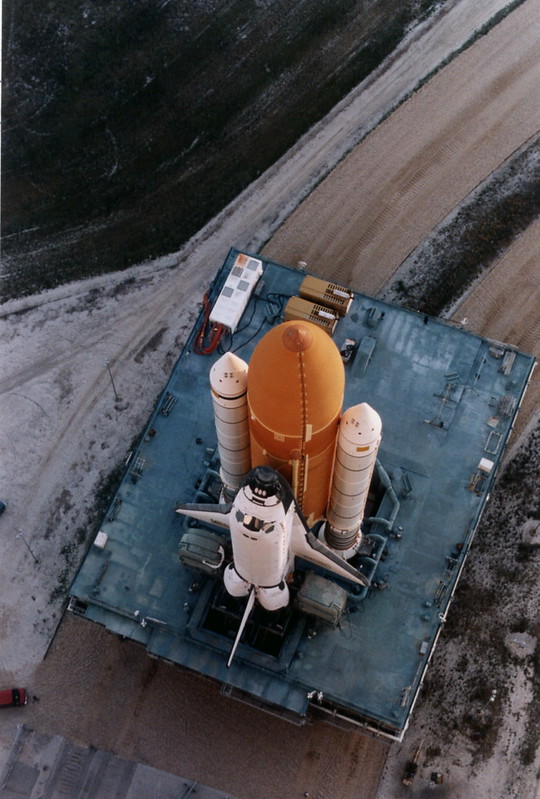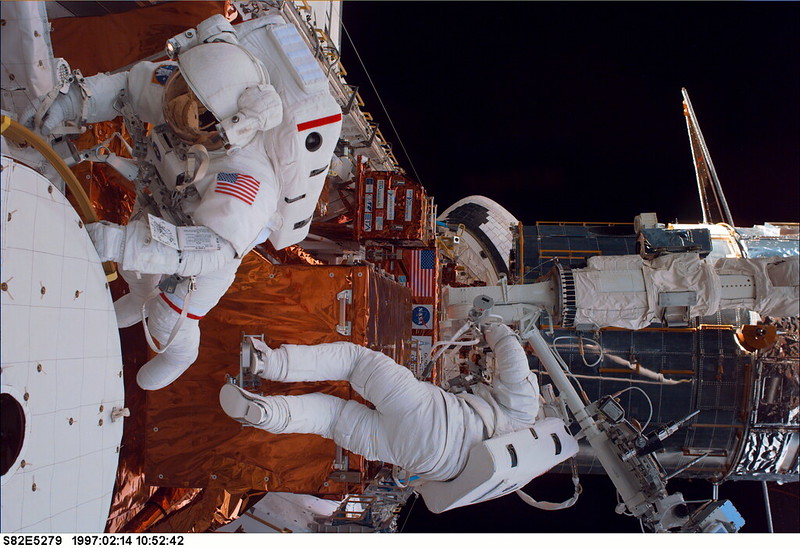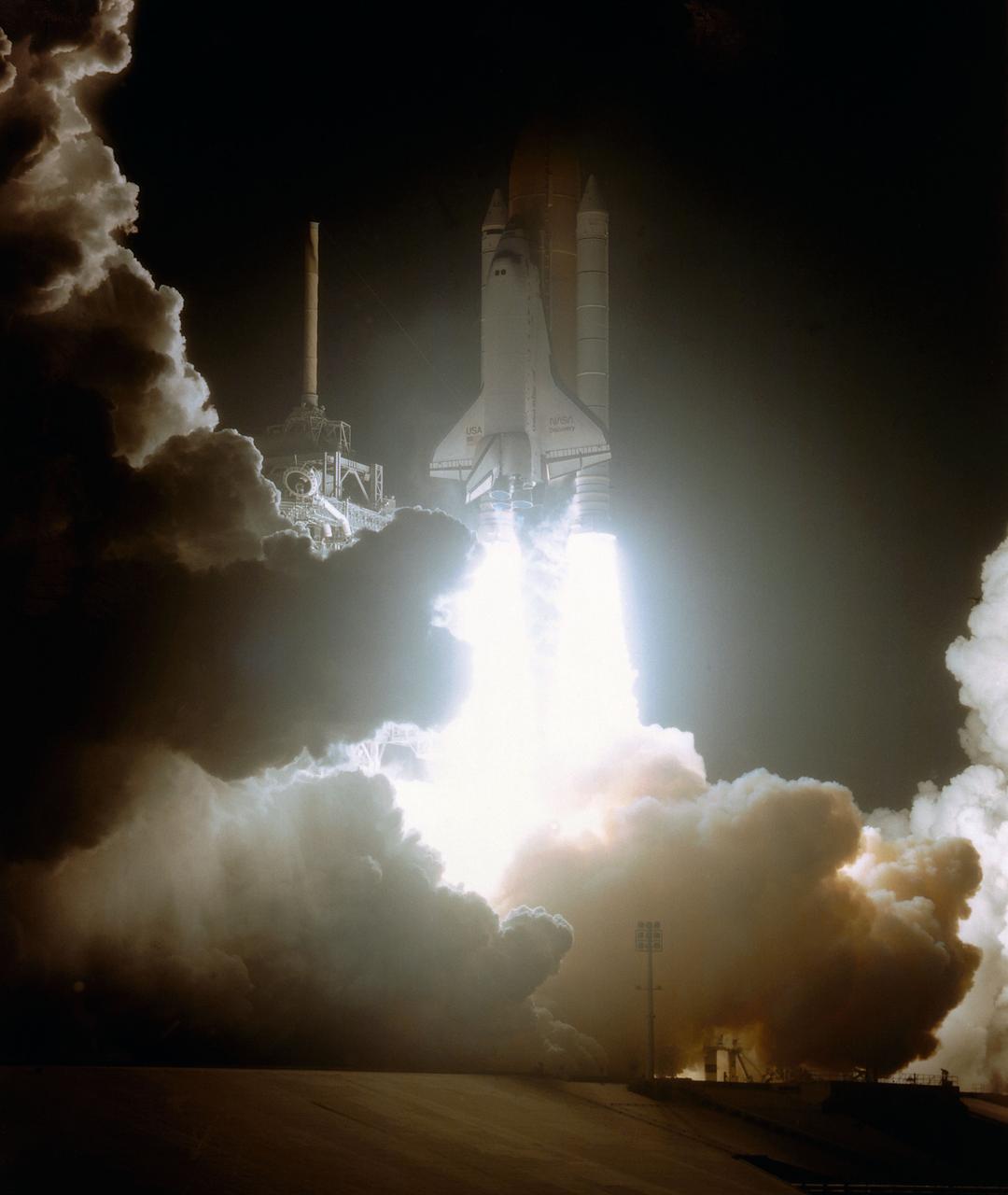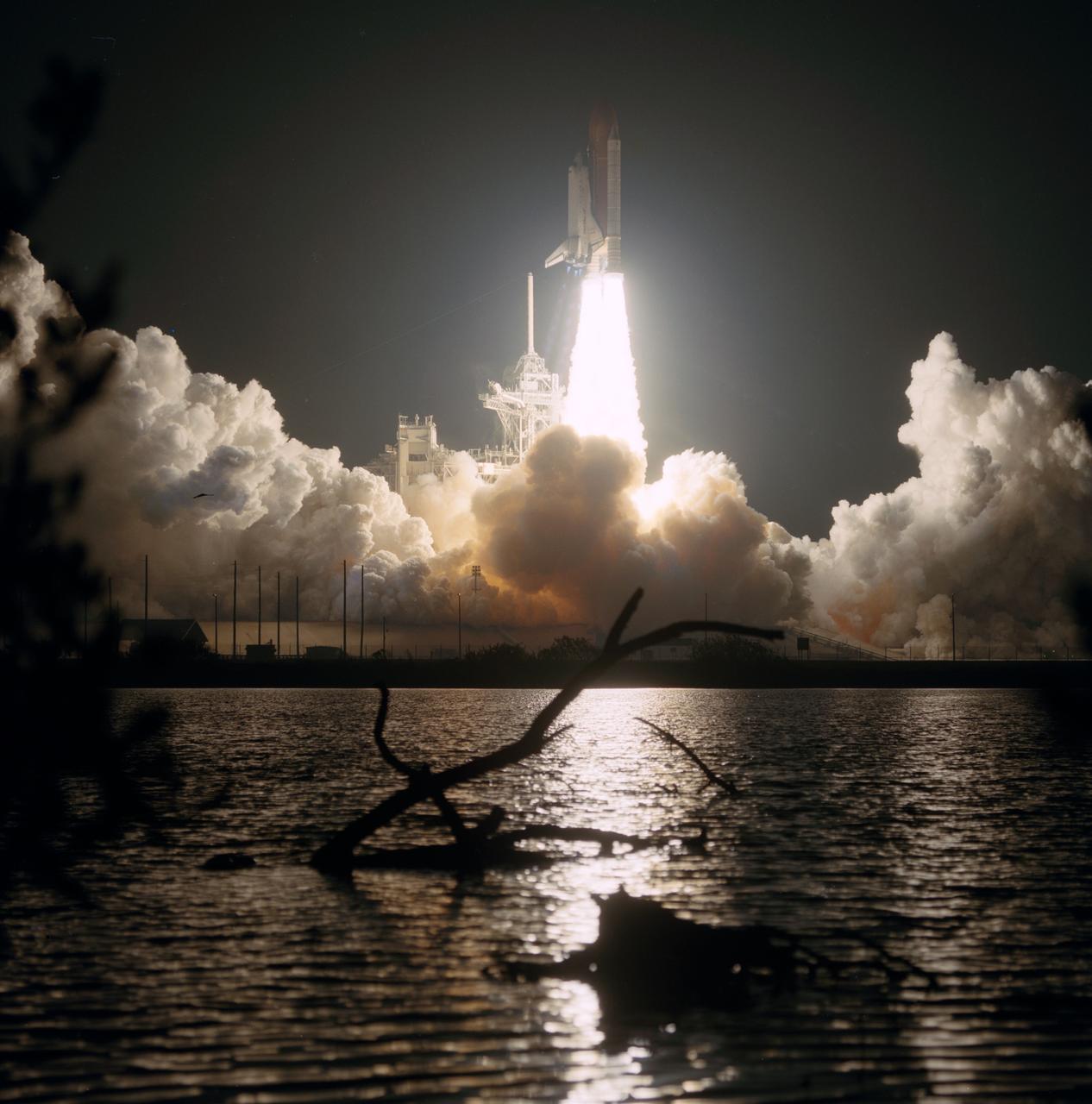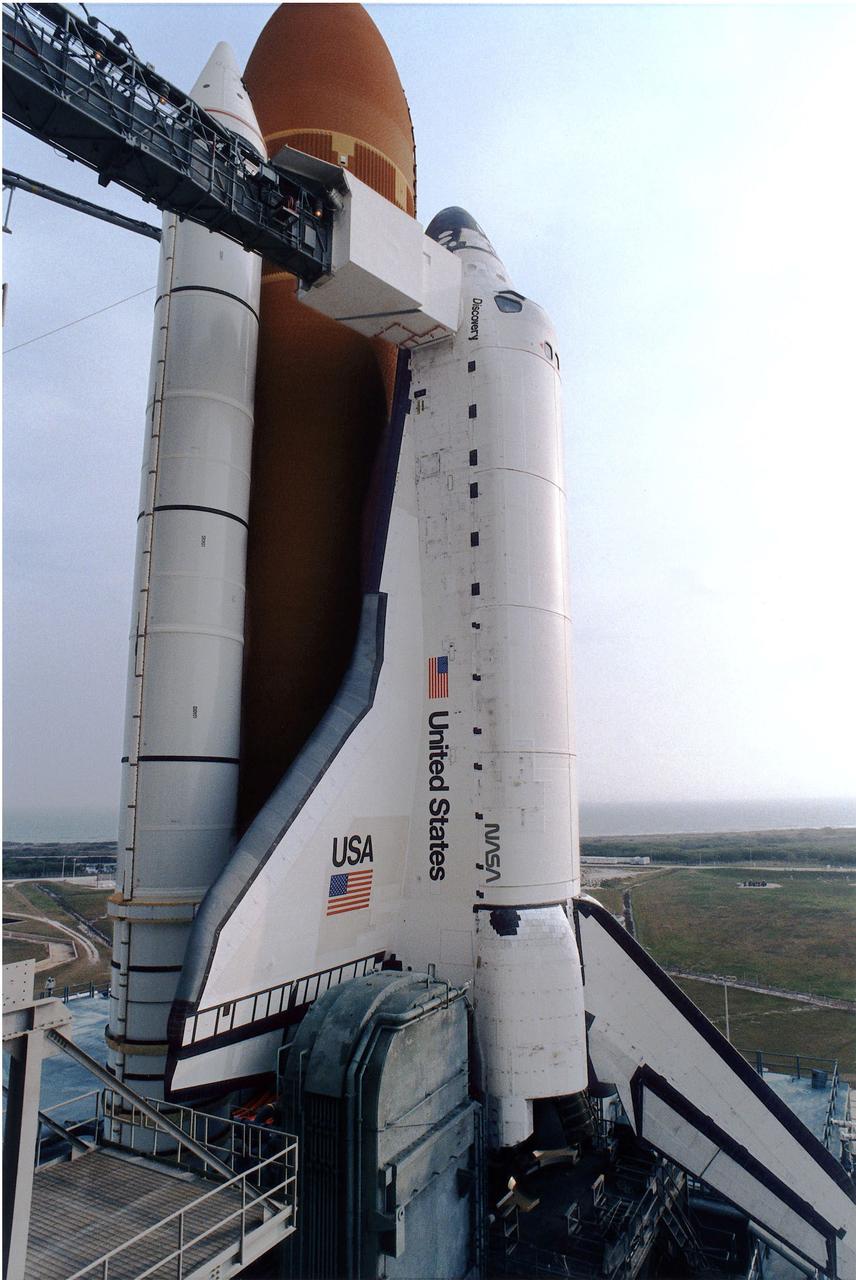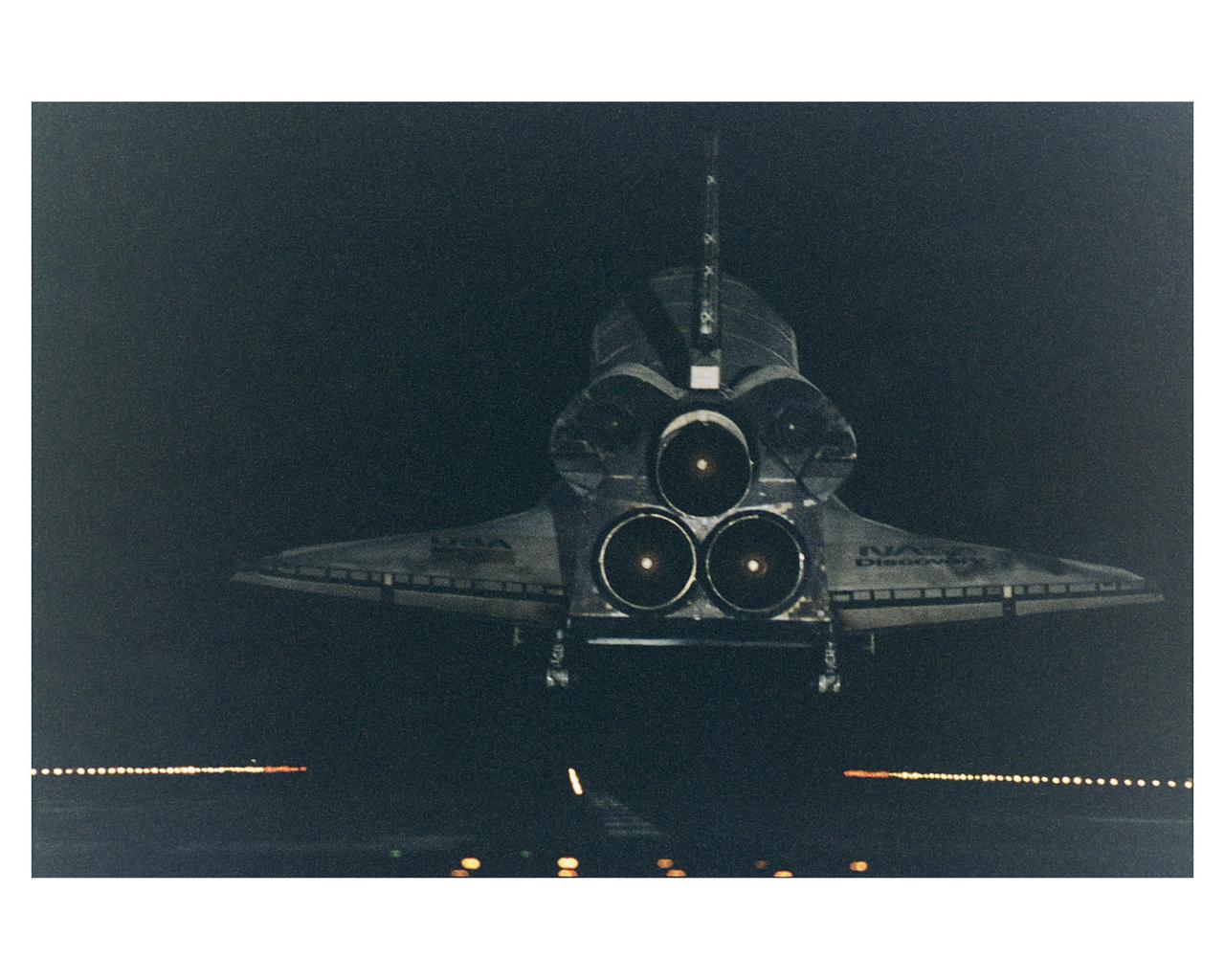STS-82 Fact Sheet
By Cliff Lethbridge
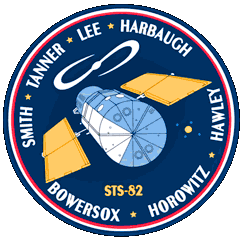
STS-82 — Discovery
82nd Space Shuttle Mission
22nd Flight of Discovery
Crew:
Kenneth D. Bowersox, Commander
Scott J. “Doc” Horowitz, Pilot
Mark C. Lee, Payload Commander
Steven A. Hawley, Mission Specialist
Gregory J. Harbaugh, Mission Specialist
Steven L. Smith, Mission Specialist
Joseph R. “Joe” Tanner, Mission Specialist
Orbiter Preparations:
Tow to Orbiter Processing Facility – June 30, 1996
Rollover to Vehicle Assembly Building – January 11, 1997
Rollout to Launch Pad 39A – January 17, 1997
Launch:
February 11, 1997 – 3:55:17 a.m. EST. Launch was originally targeted for February 13, 1997 but was moved up two days to create a more flexible launch schedule based on previously scheduled rocket launch activity reserved for the Eastern Range. Launch on February 11 occurred as scheduled with no delays.
Landing:
February 21, 1997 – 3:32:26 a.m. EST at Runway 15, Kennedy Space Center. Rollout distance was 7,066 feet. Rollout time was 60 seconds. Mission duration was 9 days, 23 hours, 37 minutes, 9 seconds. Landing occurred during the 150th orbit and upon the second landing opportunity for the day due to weather concerns.
Mission Summary:
This was the second Space Shuttle mission to service the Hubble Space Telescope (HST), which was placed in orbit during STS-31 in April, 1990 and serviced for the first time during STS-61 in December, 1993.
Astronaut Hawley, who originally deployed HST, retrieved the spacecraft using the Shuttle’s Remote Manipulator System (RMS) arm at 3:34 a.m. EST on February 13, 1997. HST was properly positioned in the payload bay about 30 minutes later.
A total of four spacewalks were scheduled, but five were actually conducted. These were designed to enhance, as well as maintain, the capabilities of HST during its intended 15-year lifespan.
Astronauts Lee and Smith conducted the mission’s first spacewalk on February 13, 1997. Although one of the HST solar arrays was disturbed as Discovery’s airlock opened, it was not damaged.
During this spacewalk, the Goddard High Resolution Spectrograph (GHRS) and Faint Object Spectrograph (FOS) were removed from HST and replaced by the Space Telescope Imaging Spectrograph (STIS) and Near Infrared Camera and Multi-Object Spectrometer (NICMOS). The mission’s first spacewalk lasted 6 hours, 42 minutes.
Astronauts Harbaugh and Tanner conducted the mission’s second spacewalk on February 14, 1997. A degraded Fine Guidance Sensor and a failed Engineering and Science Tape Recorder were removed from HST and replaced by spares. An Optical Control Electronics Enhancement Kit was installed. The mission’s second spacewalk lasted 7 hours, 27 minutes.
Astronauts Lee and Smith conducted the mission’s third spacewalk on February 15, 1997. A Data Interface Unit was removed from HST and replaced with a spare. In addition, a reel-to-reel Engineering and Science Tape Recorder was replaced with a more advanced digital Solid State Recorder which allows simultaneous recording and playback.
The astronauts also changed out one of four Reaction Wheel Assembly units of HST which help steer the spacecraft toward a particular target. The mission’s third spacewalk lasted 7 hours, 11 minutes.
At the conclusion of the third spacewalk, mission managers decided to add a fifth spacewalk to the mission in order to support the repair of worn thermal protection insulation on the outer skin of HST which was discovered during the spacewalks already completed.
Astronauts Harbaugh and Tanner conducted the mission’s fourth spacewalk on February 16, 1997. A Solar Array Drive Electronics package which controls the positioning of HST solar arrays was replaced. In addition, covers over HST magnetometers were replaced.
Also during this spacewalk, the astronauts began covering worn thermal protection insulation with new multi-layer thermal blankets. In the meantime, astronauts in Discovery’s middeck worked to fabricate new thermal blankets which would be needed during a fifth spacewalk. The mission’s fourth spacewalk lasted 6 hours, 34 minutes.
Astronauts Lee and Smith conducted the mission’s fifth spacewalk on February 17, 1997. This spacewalk was dedicated to the installation of thermal protection blankets over worn thermal protection insulation on the HST outer skin. The mission’s fifth spacewalk lasted 5 hours, 17 minutes.
Although a sixth spacewalk was considered, it was never conducted. Discovery’s maneuvering jets were fired several times while the HST was installed in the payload bay in order to boost the altitude of the spacecraft by about eight miles. HST was redeployed at 1:41 a.m. EST on February 19, 1997.
SELECTED NASA PHOTOS FROM STS-82


